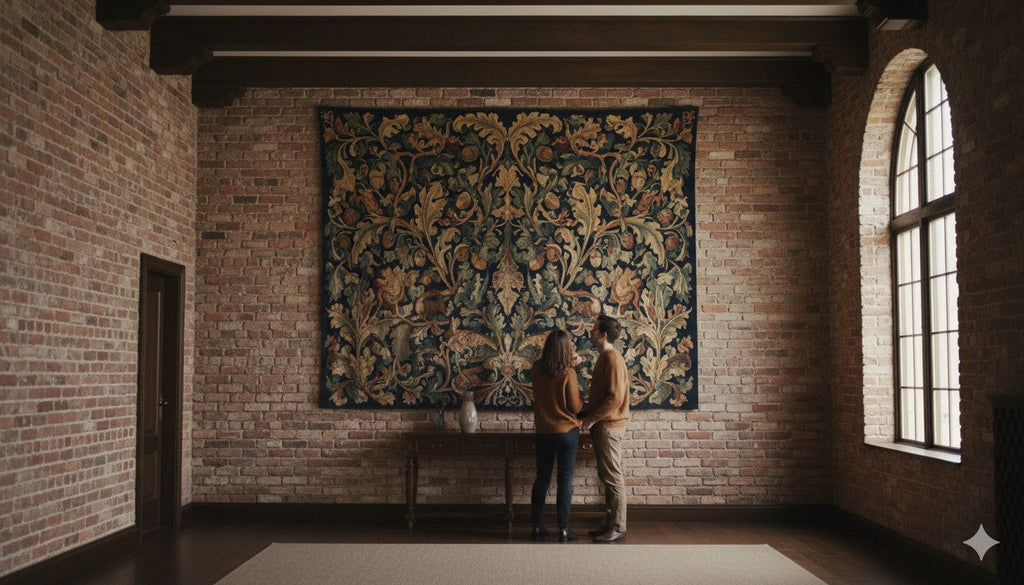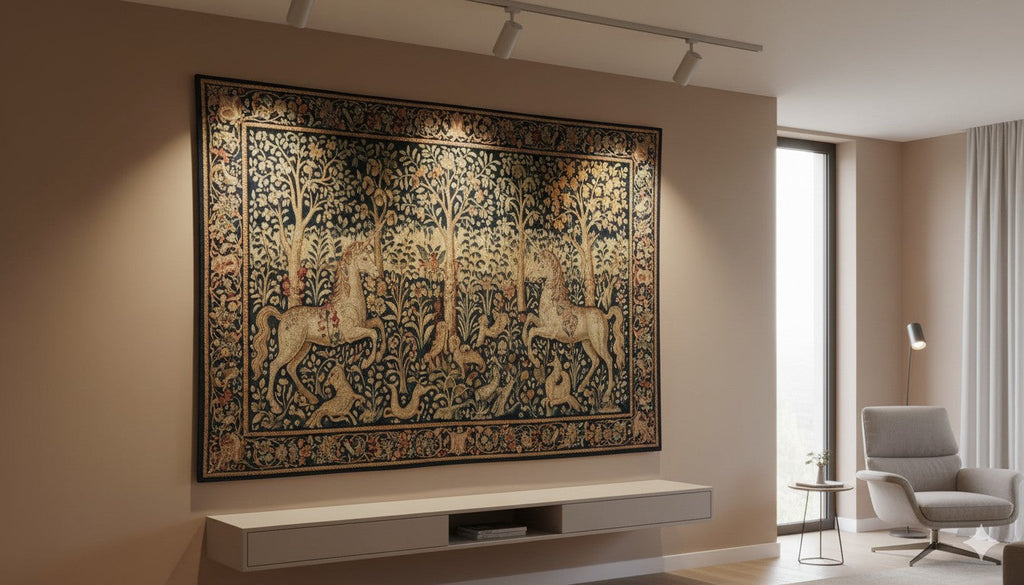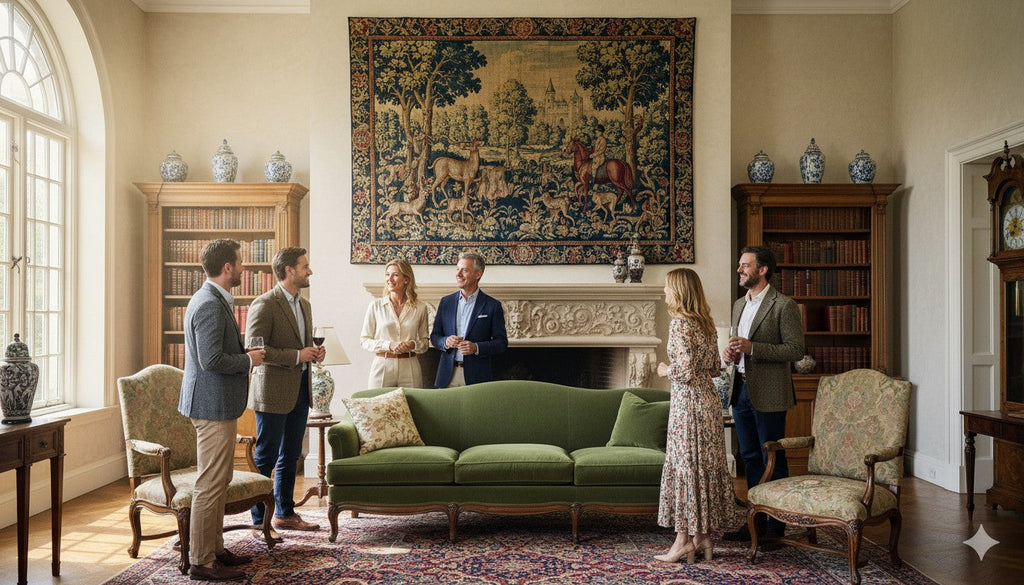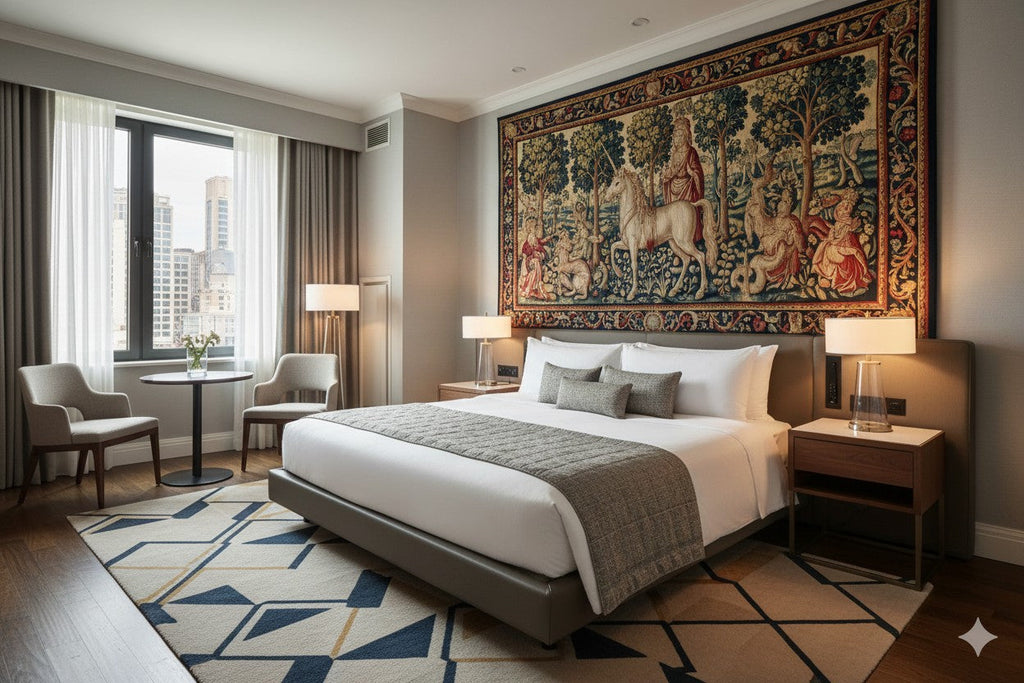Enjoy Free Shipping Across the USA!
Unraveling Medieval Tapestries: A Concise History

Medieval tapestries are counted as timeless classics of interior decoration, and there is no denying their elegance and beauty. They have a fascinating history that started long back in the 15th century. This aesthetic art piece represents the feelings and changes in Europe.
Medieval art is a storybook that includes various images. These images are a testament to the medieval age and can evoke historical landscapes.
For this reason, a medieval tapestry can be the best choice for you if you want to decorate your interior with a touch of uniqueness, aesthetics, and nostalgia. Although the original medieval tapestries are preserved in museums.
Hence, if you want to purchase one it will cost a small fortune along with the cost.
But Home decor tapestries have remade these tapestries beautifully using the jacquard weaving technique by European looms. It combines various traditional and modern weaving techniques.
As we go on the journey, the unparalleled beauty and history of medieval tapestries will be revisited. This blog post will discuss the history of medieval tapestries in brief.

Exploring The Unique Beauty Of Medieval Tapestries
As the name reflects, medieval tapestries are a particular style of wall-hanging art pieces from the Middle Ages. Rich people’s houses, royal courts, and other monumental structures like castles were used to employ these art pieces for decorative purposes.
These tapestries nowadays are pivotal in providing a rare window to medieval society. There is an abundance of subjects that were portrayed in these tapestries, such as religious stories or scenes from daily life. Through this storytelling approach, the tapestries offer us a roadway into the creative minds of medieval society people.
Various materials, such as wool, cotton, and silk, were used to make different tapestries. The design was typically woven into the fabric instead of being later painted or embroidered on. They had a very unique appearance as a result, which is still in style today.
For this reason, the skill and artistry that go into making medieval tapestries and their exquisite design contribute to their beauty.
Creating a single tapestry by an expert weaver could take several months or years. For this reason, instead of being considered commonplace house décor, they are regarded as works of art.
Types Of Tapestries Used In Medieval Times?
The Lady With The Unicorn Tapestries
New York City's The Cloisters museum is home to the famous late fifteenth-century tapestry, The Lady with the Unicorn.
The tapestry displays elaborate medieval craftsmanship and is based on a collection of six poems called Les Tres Riches Heures du Duc de Berry, written by the well-known art patron, Duke of Berry.
The work of art, full of symbolism and mystery, shows a lady encircled by unicorns and other fantastical creatures.
The tapestry, which represents purity and love, is an outstanding example of Middle Ages artistic talent and provides insight into the patronage of the time due to its historical significance and exquisite design.
The Unicorn Tapestries
The Unicorn Tapestry is a combination of seven artworks that can vividly represent the medieval pursuit of a unicorn. This unique tapestry is housed at The Cloisters Museum in New York.
The Unicron dips its horns, which are the main ones that are housed in the museum. Those tapestries were woven with intricate patterns, effectively capturing the mythological character dipping its horns into a stream.
This tapestry symbolizes purity and mystical allure. Even after ages, this tapestry can captivate the audience's attention, which makes it a timeless appeal.
The Bayeux Tapestry
A famous medieval artifact that eloquently depicts the Norman Conquest of England is the Bayeux Tapestry, created in the 1070s. This magnificent work of needlework, kept at the Bayeux Tapestry Museum in Normandy, France, is almost 70 meters long.
The scenes, which show off the creators' intricate narrative skill, are painstakingly woven and recount the incidents resulting in the Battle of Hastings in 1066.
Combining history and art, the Bayeux Tapestry is a fascinating look into the medieval era that takes viewers on a visual tour of one of the most critical periods in English history.
Renaissance Tapestry
Intricate craftsmanship and creative inventiveness were displayed in the Renaissance Tapestry, a European cultural revival from the 14th to the 17th century that frequently featured themes from mythology, the Bible, or history. They decorated palaces and castles commissioned by the nobility to signify wealth and taste.
Role of Franchos Bouchoir and William Moris
Franchos Bouchoir & William Morris had a pivotal role in the rich history of medieval tapestry. Both of them were renowned for their intricate designs and mastery of color.
Bouchoir's complex scenes depicted courtly life and chivalry, while Mori's detailed landscapes and architectural elements showcased realism. Both artists significantly shaped the narrative and aesthetic of medieval tapestries, leaving a lasting legacy.
Conclusion
Before concluding this historical journey of medieval tapestries, we must appreciate every thread's craftsmanship, artistry, and excellence in storytelling.
Home Decor Tapestries will help you bring an art piece with a rich history to your walls. These timeless classics can bridge the gap between the past and the present. Join us to celebrate this legacy.





















